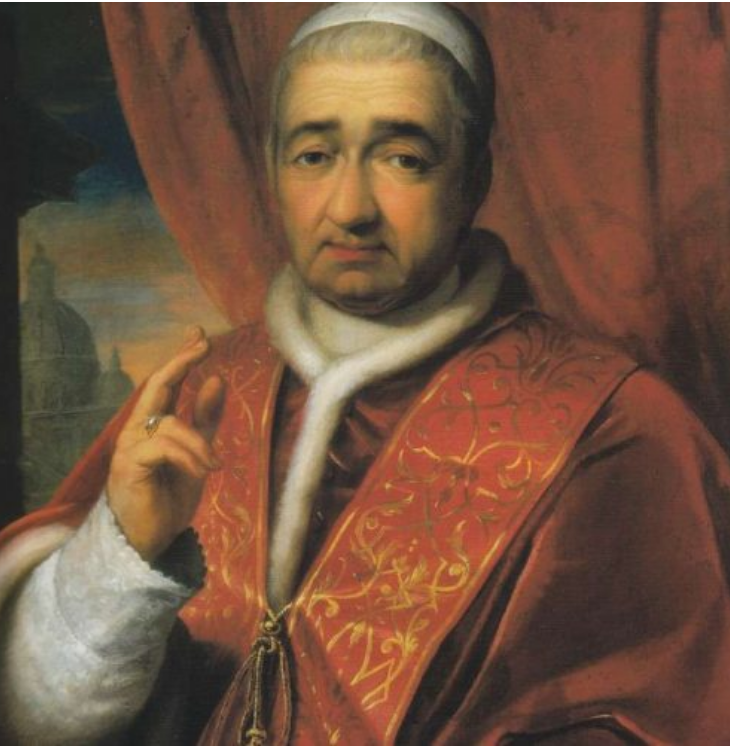‘A State of Siege’: the Roman Cholera Epidemic of 1837
We were regularly in a state of siege. Every town and village exercised to the utmost municipal rights and surrounded itself with a sanitary cordon, which was as jealous of foreign approach as the dragon guardian of the Hesperides. [1]
Though this passage sounds remarkably like the pandemic of 2020, it comes from the pen of Nicholas Wiseman (1802–1865), rector of the Venerable English College from 1828 to 1840, reminiscing about the cholera epidemic that struck Rome in 1837.
An English correspondent of that day similarly wrote:
Everyone imagines that the slightest contact with any of his fellow-creatures must be fatal. No one is allowed to address another. Every person takes up his letters with a pair of tongs, and walks out like the Papal halbardine [Swiss Guard], with a long weapon brandished before him, crying “ Keep a distance.” [2]
The dreaded cholera appeared in Rome in August 1837, as it had two years previously. It was a deadly disease, which at the time remained a mystery to the scientific community; it would reappear several more times before the end of the century, when an effective treatment was finally made available: in 1867 it claimed the lives of the Queen Dowager of the Two Sicilies and the Cardinal Bishop of Albano.
The pope of the time, Gregory XVI (1765–1846), had already set up a health commission under the secretaryship of Monsignor Camillo Amici (1802–77), had encouraged the research of the Rome-born doctor, Domenico Meli (1784–1865) into cholera, and did much to support cholera victims.
Bartolomeo Alberto Cappellari (1765–1846), elected as Pope Gregory XVI, 1831
Title-page of the 1835 medical research findings of Domenico Meli (1784–1865), a member of Gregory XVI’s health commission, following his investigations into cholera in Paris, undertaken at the pope’s request.
Gregory XVI also encouraged acts of piety, series of sermons exhorting the people to repentance and the procession of the famous image of the Virgin and Child kept at the Basilica of Santa Maria Maggiore, then referred to as the Regina Caeli but better known subsequently as Salus Populi Romani. The ancient image had been brought out in a similar procession by the pope’s namesake, St Gregory the Great (c.540–604), during the plague of 590.
The Salus Populi Romani image: this was restored in the Vatican conservation laboratories in 2018
Image reproduced from Wikimedia Commons at commons.wikimedia.org/wiki/File:SalusPopuliRomani2018.jpg
On 6 August 1837, the icon was brought in procession to the Gesù, the Jesuit church in the historic centre of the city. Wiseman noted that the pope himself walked on foot but ‘some questioned the prudence of thus assembling crowds together’.[3] The fact that the procession did not move into Trastevere or into the Borgo was a recognition of the need to follow public health advice. The icon remained a focus of prayer at the Gesù until 15 August 1837, when it was transferred back to Santa Maria Maggiore, again in solemn procession.
The English College was, of course, affected by the crisis. The buildings on the Via di Monserrato were transformed into a hospital for convalescents and the College community retreated to its summer house at Monte Porzio. The Rector recalled that a health committee was set up there, consisting of villagers and English clerics, and that
every room in every house was visited, cleaned, and white-washed where needful; every nuisance abated; wholesome provisions furnished to all in need; and, as medical attendance is at the public charge in all Roman communes, we supplied medicines free-cost.[4]
All in all, there was a total of 5,479 deaths in Rome – 36.4 per 1,000 – including 80 foreigners, of whom two were English.
Once the lockdown was eased, the English College undertook the support of two children who had been orphaned. The daughter of the Earl of Shrewsbury, Lady Gwendoline Talbot (1817–1840), Princess Borghese, who had once been referred to by King William IV (1765–1837) as ‘the greatest beauty in the realm’, was also conspicuous in helping the victims, bringing food, clothes and medicine to the needy.
Lady Gwendoline Talbot (1817–1840) married Marcantonio Borghese (1814–86), 8th Prince of Sulmona in 1835: she died of scarlet fever, aged 23
The disease gradually ebbed away and a thanksgiving service was duly held at Santa Maria Maggiore on 15 October 1837. Prayers were offered at the image of Salus Populi Romani, not only because those present had survived the epidemic but because, as with the pandemic of 2020, the local community had pulled together in solidarity and charity.[5]
[1] Nicholas Wiseman, Recollections of the Last Four Popes (London, 1865), p. 407.
[2] London Courier and Evening Gazette, 7 September 1837, p. 2.
[3] Wiseman, Recollections, p. 407.
[4] Ibid., p. 408.
[5] The writing of this blog was inspired by a blog by Antonio Saluzzi of Monte Porzio Catone, published in May 2020 at lacimadeltuscolo.blogspot.com/2020/05/pandemie-vecchie-e-nuove-monte-porzio.html (accessed 12 July 2020).




